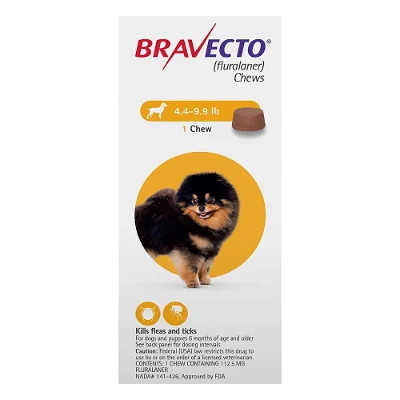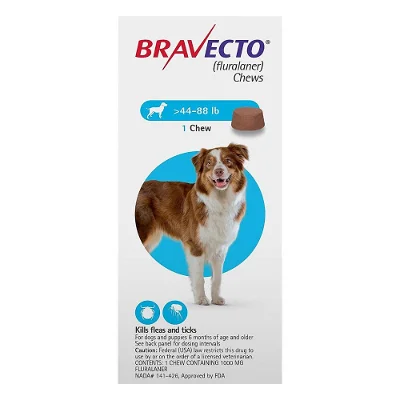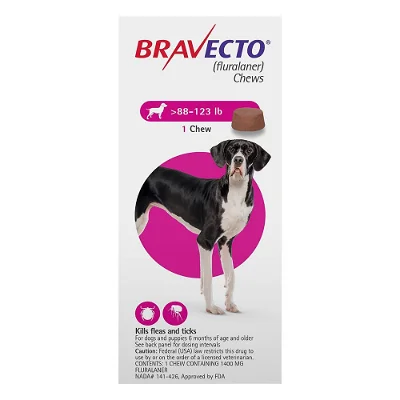Bravecto is a chewable tablet for dogs that is used to prevent flea infestations and control the spread of tick-borne diseases.
The effects of Bravecto can be seen in dogs as soon as 24 hours after administration.
at canadapetcare.com
Shipping within the US continent are delivered within 10-15 business days.
Shipping to countries other than the USA, are delivered within 21-28 days from the day they are shipped.
It is hard to estimate how common the side effects are, but it is important for dog owners to be aware of them given that they can occur.
The most common Bravecto side effects in dogs are vomiting, diarrhea and decreased appetite. If you notice any of these symptoms, contact your veterinarian immediately.
Some more common side effects are lethargy, tremors, seizures and increased salivation.
Some less common side effects are anxiety and a range of abnormal movements including twitching, shaking or trembling.
List of Brevecto Side Effects in Dogs
- vomiting
- diarrhea
- decreased appetite
- lethargy
- tremors
- seizures
- increased salivation
What are the Minimum Age Requirements for Bravecto?
The FDA has approved Bravecto for use in dogs 4 weeks of age and older, weighing 2.8 pounds or greater.
In studies conducted by the FDA, Bravecto was shown to be safe for use in dogs as young as four weeks old and at least 2.8 lbs (1.3 kg) in weight.
Does Bravecto kill dogs?
Does Bravecto kill dogs or is it just a rumor? There is a lot of misinformation about Bravecto and its supposed effects on dogs.
Bravecto is a chewable tablet that contains the active ingredient sarolaner. Sarolaner’s manufacturer, Merck, does not list dogs as a risk group for adverse side effects.
The FDA approved Bravecto for the treatment and prevention of flea infestations, and the treatment and control of tick infestations in dogs and cats.
To be safe, We always recommend speaking to your veterinarian.
Bravecto Side Effects in Dogs are Quite Uncommon
Bravecto side effects in dogs are quite uncommon, but they can happen. They include vomiting, diarrhea, decreased appetite, lethargy and hair loss.
Bravecto is FDA-approved for use in breeding, pregnant, and lactating female dogs.
This test has been completed on puppies who are 8-9 weeks old and in the 5x clinical dose.
The new chewable Bravecto for dogs has been shown to be safe for MDR-1 collies at three times the recommended dose
The side effects of Bravecto in humans are not yet known by the FDA – so please do not use it on youself!







